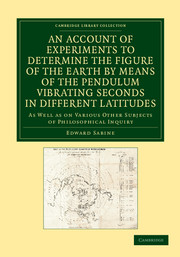
- Cited by 1
-
Cited byCrossref Citations
This Book has been cited by the following publications. This list is generated based on data provided by Crossref.
Ohnesorge, Miguel 2024. The promises and pitfalls of precision: random and systematic error in physical geodesy, c. 1800–1910. Annals of Science, Vol. 81, Issue. 1-2, p. 258.
- Publisher:
- Cambridge University Press
- Online publication date:
- October 2014
- Print publication year:
- 2014
- First published in:
- 1825
- Online ISBN:
- 9781139839372




